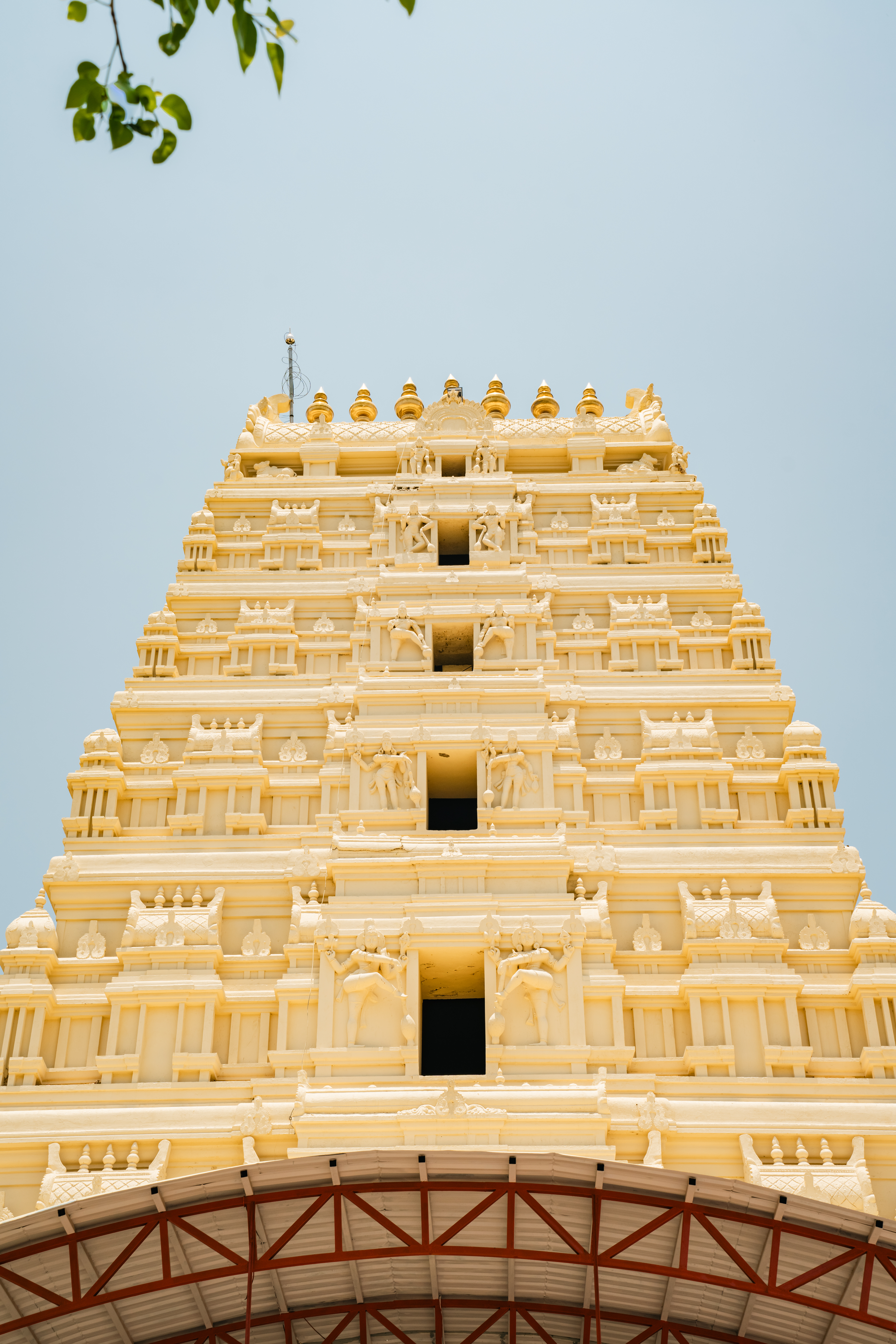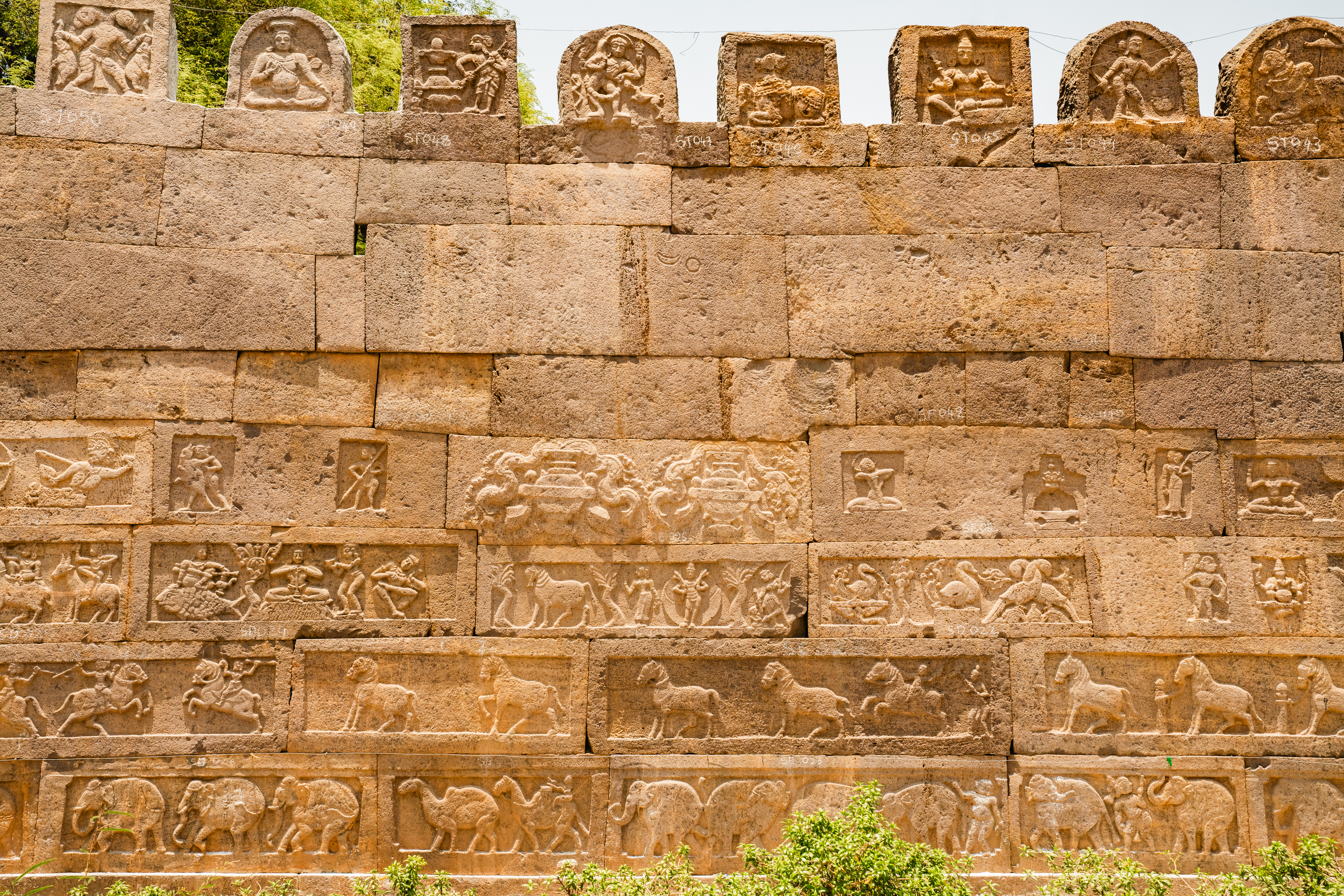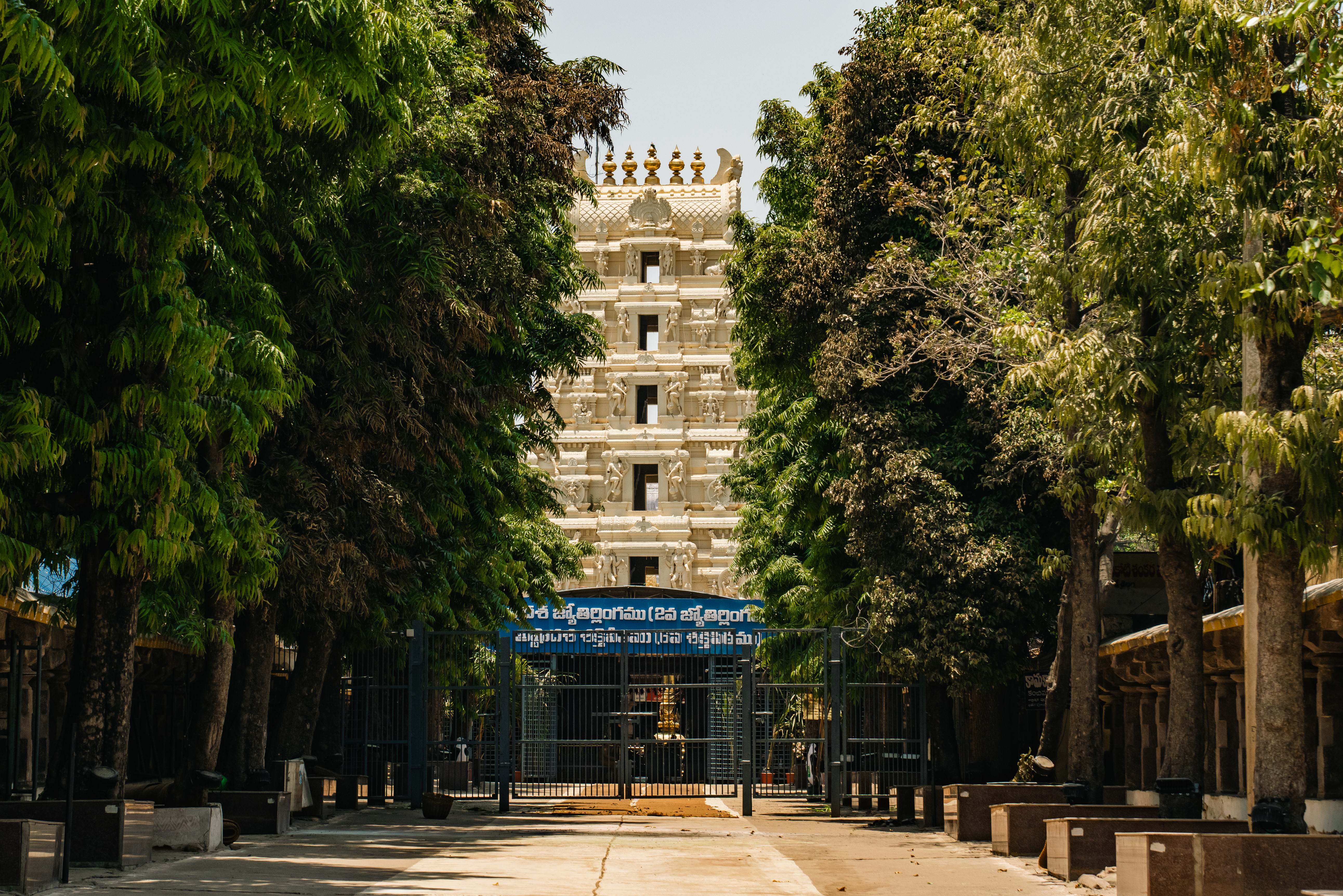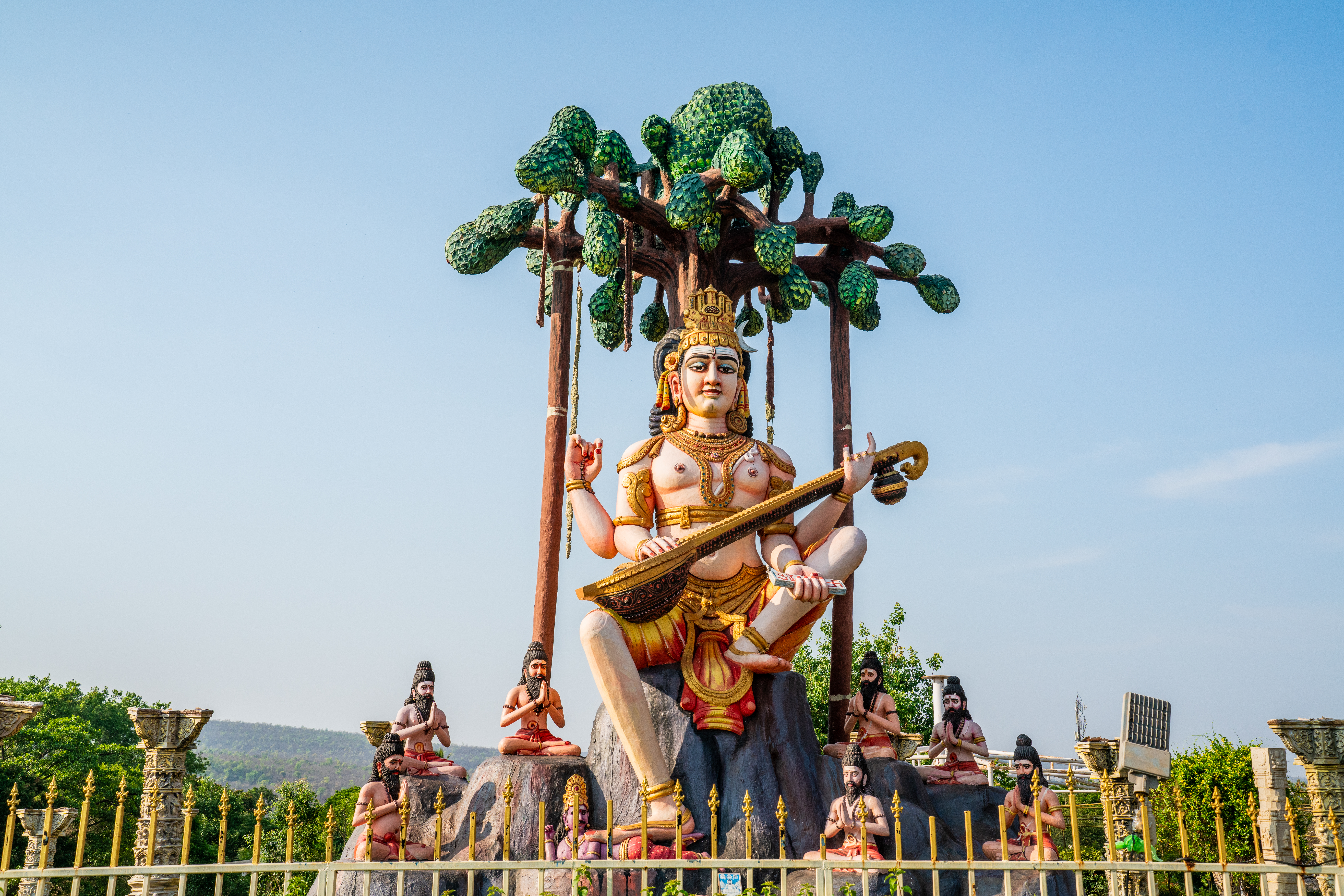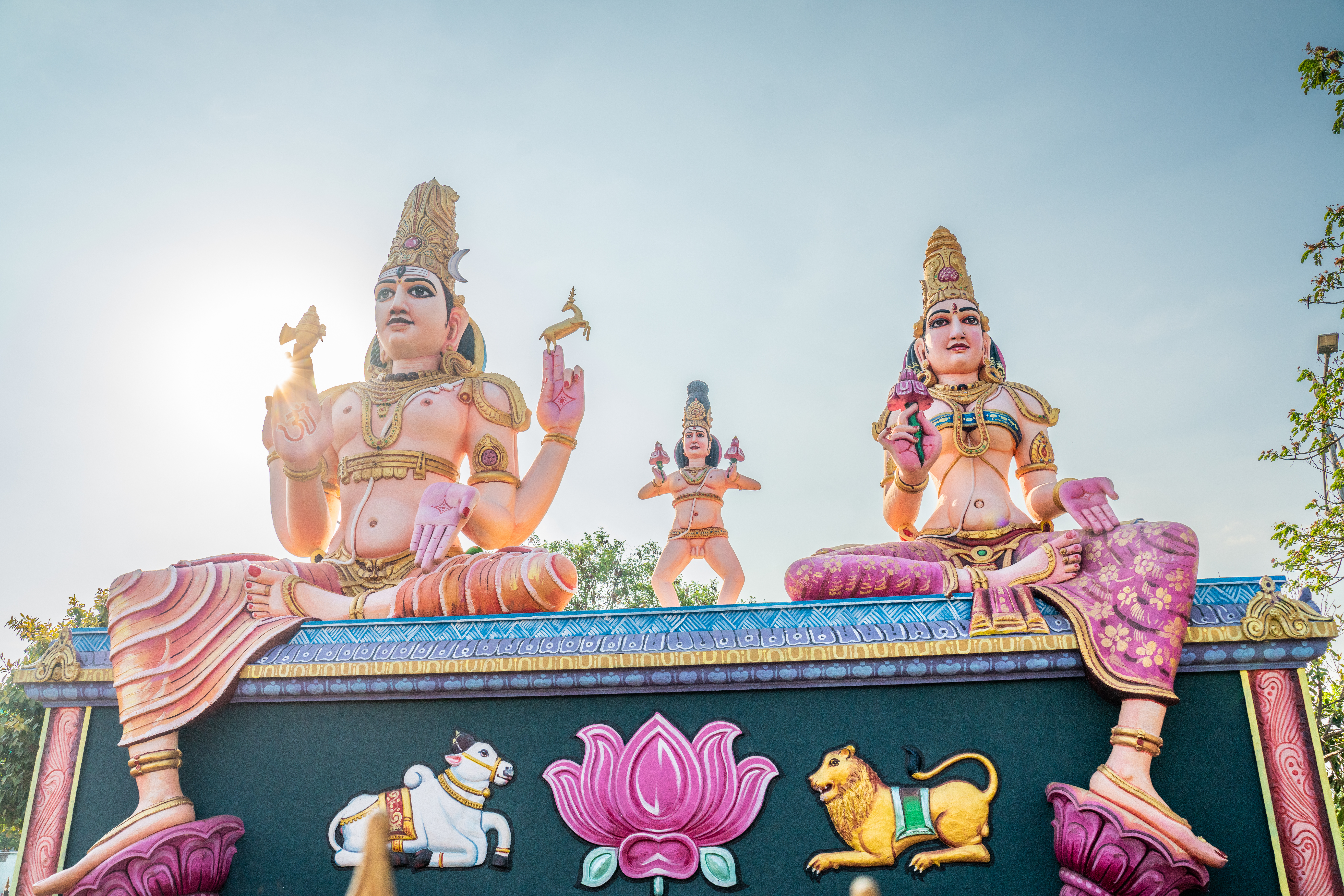Mallikarjuna Swamy: Long ago, Silada Maharshi, the son of Soma Muni, performed intense tapasya (penance) in the name of Lord Shiva. Pleased with his devotion, Lord Shiva granted Silada Maharshi's wish for sons who would continue worshiping Him. Silada Maharshi named his sons Nandi and Parvat. These sons learned all about Lord Shiva and became His great devotees. With his father's permission, Parvat performed tapasya. Impressed by Parvat’s devotion, Lord Shiva asked him what he wished for. Parvat expressed a desire to become a mountain filled with divine beings, holy rivers, sacred water bodies, numerous peaks, animals, birds, the eight Bhairavas, sages, fruit-bearing trees, and medicinal plants, with Lord Shiva residing atop him in the form of a prime Jyotirlinga. Lord Shiva, pleased by Parvat’s unique wish, granted it. Parvat became the mountain known as Sriparvatam, Srinagam, Srisailam, or Shrigiri, with Lord Shiva residing on its highest peak as a Jyotirlinga. This is how Lord Shiva took the form of Jyotirlinga in Srisailam. Sri Bhramaramba Devi: The Skanda Puranam and Srisaila Khandam describe the divine form of Parvati Devi, known as Bhramaramba Devi. Once, a demon named Arunasura performed tapasya to Gayatri Devi, seeking immortality. Gayatri Devi explained that only Lord Brahma could grant such a wish. Arunasura then performed intense tapasya to please Lord Brahma. Disturbed by his prayers, the gods requested Brahma to intervene. Brahma appeared before Arunasura and, unable to grant immortality, asked him to choose another wish. Arunasura requested that he should not face death by any two-legged or four-legged beings. Brahma granted this wish. Arunasura, believing himself invincible, began to trouble the gods and people. To stop him, Parvati Devi incarnated as a swarm of bees (Bhramara) and killed him. The grateful gods requested her to take a form they could worship eternally. Parvati Devi chose Srisailam to reside as Bhramaramba Devi, alongside Lord Shiva, to bless all her devotees. Historical Significance: Srisailam, home to Sri Bhramarambika Devi and Mallikarjuna Swamy, has been a revered site for thousands of years. The first dynastic evidence at Srisailam comes from the Satavahanas, with King Satakarni, a devoted follower of Sri Mallikarjuna Swamy, mentioning Srisailam as Chakora Shetagiri in the 3rd century CE. The Ikshvaku dynasty also considered Srisailam holy. In the 6th century CE, Kadamba king Mayura Sharma referred to Srisailam as Sriparvatam. Under the Kadamba rule, Bruhaddhana unified Sriparvatam with his territory. The Badami Chalukyas, with ruler Pulakeshi known as the king of temples, constructed many temples and performed Shiva Deeksha. The Rashtrakuta Empire, under Dantidurga, ruled around Sriparvatam between 735-755 CE. Kalyana Chalukya ruler Trayalokamalya Deva built a gopuram on the Garbhalayam, and his grandson donated a village to Srisailam for satrams and dharamshalas. By the late 11th century, Srisailam was recognized as a Maha Shiva temple and a Vedic center. The Hoysala dynasty collected Crystal Shiva Lingams from Patalaganga near the Krishna River and constructed numerous temples, earning Srisailam the name Southern Kashi among Maharashtrians. Prataparudra of the Kakatiya dynasty and his wife performed Tulabhaaraseva at Srisailam, earning the blessings of Sri Mallikarjuna Swamy and Bhramaramba. Srisailam Temple Architecture The Srisailam temple complex, nestled atop the Nallamala Hills, is a splendid example of South Indian temple architecture. Its layout reflects traditional Dravidian styles, with prominent gopurams (tower gateways) and intricate carvings. The Rajagopuram, the main entrance tower, stands tall with detailed sculptures depicting scenes from Hindu mythology. At the heart of the complex is the Garbhagriha (sanctum sanctorum), housing Mallikarjuna Swamy (Lord Shiva) in the form of a Jyotirlinga, alongside the shrine of Goddess Bhramaramba Devi. The temple features several mandapams (pillared halls), including the Mukha Mandapam and Ardha Mandapam, both adorned with intricate carvings of deities and mythical scenes. The walls and pillars showcase the artistic skills of ancient craftsmen, with detailed depictions of gods, goddesses, and epic tales from the Ramayana and Mahabharata. Sub-shrines dedicated to various deities and sacred water bodies like Pathalaganga add to the spiritual atmosphere. The architecture of Srisailam bears the influence of several South Indian dynasties, including the Satavahanas, Chalukyas, Kakatiyas, and the Vijayanagara Empire, each contributing unique elements to the temple's grandeur. The complex stands as a testament to the devotion, artistry, and architectural excellence of these ancient dynasties.
|
To be updated
